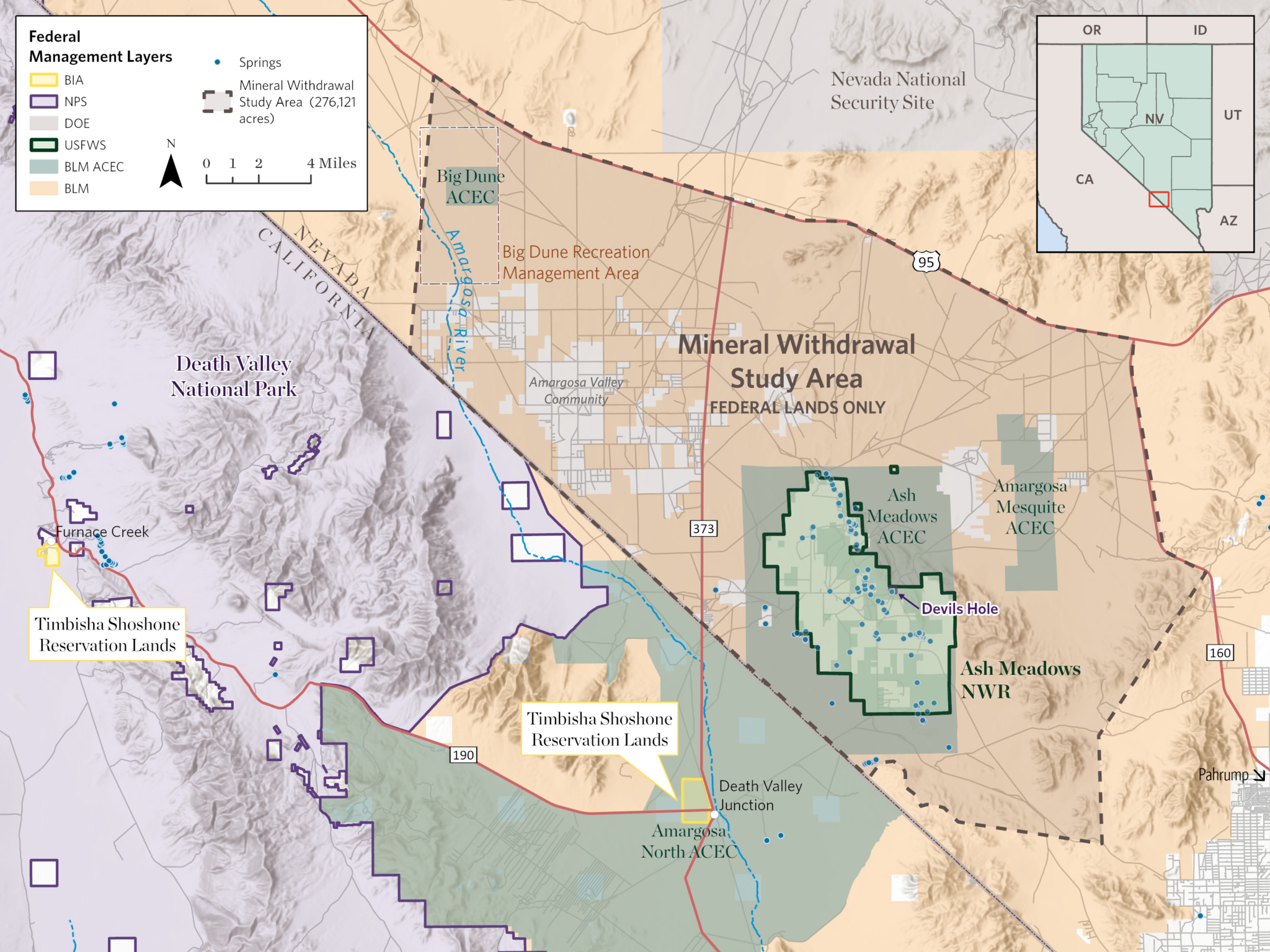Federal Action to Safeguard Sacred Lands and Water Resources
The federal government has initiated the mineral withdrawal process for approximately 308,890 acres of public land in Nevada’s Amargosa Valley. This action temporarily halts new mining claims in the area, allowing for a two-year review of the valley’s ecosystems, groundwater reserves, and culturally significant landscapes. The goal is to determine if these lands should receive a full 20-year mineral withdrawal to prevent adverse impacts from potential mining operations.
As part of this process, the Bureau of Land Management (BLM) will hold a public meeting on February 27, 2025, at 5:30 pm Pacific time at the Amargosa Community Center, located at 1640 East Amargosa Farm Road, Amargosa Valley, Nevada 89020. The meeting will provide an opportunity for residents, tribal members, and stakeholders to voice their perspectives and learn more about the withdrawal process.
The Bureau of Land Management (BLM) will lead the review process, working with local governments, tribal leaders, and other stakeholders to assess how future mining activities might affect the region’s water supply and environment. This decision follows public outcry and legal challenges against mining proposals near Ash Meadows National Wildlife Refuge, a biodiverse area home to the endangered Devils Hole pupfish and other unique species.
Widespread Support for Mineral Withdrawal
The initiative has received bipartisan backing from local governments, tribal organizations, and Nevada’s congressional delegation. The Nye County Commission, the Amargosa Valley Town Board, and the Beatty Town Board unanimously supported the proposal. The Timbisha Shoshone Tribe emphasized the importance of protecting sacred lands and water resources vital to their culture. Additionally, Nevada’s federal lawmakers, including Senators Catherine Cortez Masto and Jacky Rosen, and Representatives Steven Horsford, Susie Lee, and Dina Titus, advocated for the BLM to act.
Scientific research commissioned by The Nature Conservancy highlighted the potential for severe impacts to groundwater-dependent resources if mining operations proceed. Local leaders have emphasized that safeguarding water is critical for the region’s communities and ecosystems.
Statements from Local Leaders
Bruce Jabbour, Nye County Commissioner, said, “This land is sacred, and its water resources are the lifeblood of our communities and economy. Protecting our water is essential to our survival.”
Carolyn Allen, Chair of the Amargosa Valley Town Board, stated, “The people of Amargosa Valley are fighting for our water. Today’s federal action is a victory for every family, farmer, and ecosystem that depends on this land.”
Mandi Campbell, Tribal Historic Preservation Officer for the Timbisha Shoshone Tribe, remarked, “This is a fight for our identity, sovereignty, and survival. The waters of the Amargosa Valley sustain our sacred traditions and future generations.”
Next Steps
The mineral withdrawal process will include a National Environmental Policy Act (NEPA) review, with opportunities for public input and stakeholder engagement. Advocates emphasize the need for ongoing efforts to secure permanent protections for the region.
Mason Voehl, Executive Director of the Amargosa Conservancy, noted, “This decision reflects the power of local communities working together. We must continue to safeguard the Amargosa River and the life it sustains.”
The decision to initiate the mineral withdrawal represents a significant step toward protecting the ecological, cultural, and economic integrity of Ash Meadows and the Amargosa Valley for future generations.
Map via Amargosa Conservancy


Leave a Reply